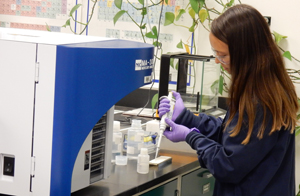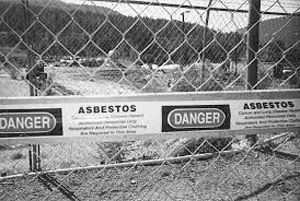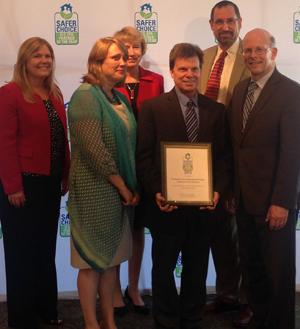With a team that includes chemists, geologists, engineers, risk assessors, toxicologists, ecologists, and environmental scientists, TechLaw is known as a firm that brings proven—and often unique—scientific approaches to solving challenging environmental issues. From custom designed analytics to novel sampling techniques, we combine the most up-to-date technology with our decades of experience to find solutions to complex issues.
Our people drive our innovation, and they utilize their technical expertise to provide deep knowledge and understanding to their clients. They possess advanced degrees in fields such as environmental toxicology, hydrogeology, minerals engineering, metallurgy, geophysics, industrial hygiene and law. They have vast backgrounds working in academia, the private sector, the military and for federal, state and local governmental agencies and organizations. Their research and work has appeared in legal, environmental and scientific publications and conferences, and they are frequently called on to provide training and expertise to agencies and organizations.
US EPA SW-846 Methods Support
Nationwide
 TechLaw supports the US Environmental Protection Agency in the development of scientific test methods that are used for the analysis of various environmental media. The mission of EPA’s Office of Resource Conservation and Recovery (ORCR) is to provide the laboratory and environmental analysis community with the most up-to-date EPA chemical analysis methods. EPA’s SW-846 laboratory methods are used by hundreds of laboratories to analyze environmental samples in a variety of matrices, both domestically and around the world. TechLaw supports the EPA workgroups that update older methods with new technology, and develops and validates new methods, such as the recently published bioavailable lead method (Method 1340).
TechLaw supports the US Environmental Protection Agency in the development of scientific test methods that are used for the analysis of various environmental media. The mission of EPA’s Office of Resource Conservation and Recovery (ORCR) is to provide the laboratory and environmental analysis community with the most up-to-date EPA chemical analysis methods. EPA’s SW-846 laboratory methods are used by hundreds of laboratories to analyze environmental samples in a variety of matrices, both domestically and around the world. TechLaw supports the EPA workgroups that update older methods with new technology, and develops and validates new methods, such as the recently published bioavailable lead method (Method 1340).
TechLaw provides expert chemical analysis knowledge, editorial support and research for reference, which is used to present each method for public viewing and comments. Each public comment is reviewed by the workgroup and integrated into further updates. TechLaw works with EPA, as well as commercial laboratory scientists and instrument vendors, to help author the most updated and robust methodology available anywhere. For example, TechLaw expert scientists have participated in the EPA workgroup developing SW-846 Method 8327 for the detection of PFAS in non-potable and wastewater matrices.
Libby EPA Superfund Asbestos Site
Libby, Montana

Just outside the small town of Libby, MT (population 2,700), an hour from the Canadian border, sits the largest Superfund site in the US, the Libby Asbestos Site. A once-thriving vermiculite mine that operated from the 1920s to 1990 is laced with a naturally-occurring form of asbestos called Libby Amphibole asbestos, which was released into the surrounding area by mining activities and through residential uses such as insulation or gardening fill. Decades after the mine closed, residents could still be exposed to asbestos if they disturbed contaminated soil, which could happen during activities such as remodeling, ATV riding and gardening. The Libby site was listed on the National Priorities List in 2002 and EPA approached TechLaw for assistance with Libby sample analysis, data management, and GIS activities in 2007. Since that time. TechLaw has been instrumental in developing and implementing solutions that improve analytical data quality, reduce analytical turnaround time and costs, and manage site data, while providing high-quality analytical results and linking all data in a near real-time online database.
The unique mineralogy of Libby Amphibole asbestos meant that standards and methods developed for analysis of commercial-grade asbestos would be of limited use for the Libby Site. This required modifying existing methods to produce successful results. TechLaw researched and developed site-specific methods that successfully analyzed for the Libby Amphibole with the precision and accuracy required at the site. For example, asbestos may be unevenly distributed through a soil sample, or may be present at too low of a concentration to be detected by traditional PLM (Polarized Light Microscopy) methods. In order to meet this challenge, TechLaw developed specialized soil processing procedures and analytical methods, including Transmission Electron Microscopy (TEM).
TechLaw scientists soon established the Troy asbestos sample preparation facility in Troy, MT, which included planning and constructing negative air flow, HEPA-filtered, segregated laboratory space, fabrication and installation of ventilation hoods for drying ovens, and installation of laboratory hoods. Work at the facility has included preparing and processing soil samples for asbestos analysis and development of the Fluidized Bed Asbestos Segregation (FBAS) method. TechLaw scientists worked closely with EPA Region 10 to develop and implement the FBAS method for the analysis of respirable fibers in soil, which is used at EPA’s Environmental Services and Assistance Team (ESAT) Libby facility, as well as private laboratories. TechLaw staff members also developed and performed the Libby-specific PLM asbestos analytical procedures, which is utilized in the ESAT Region 8 laboratory and has achieved NVLAP accreditation
In addition to asbestos analysis, TechLaw scientists have designed, developed, and implemented a TEM program from scratch, including ordering the equipment, setting up the laboratory, writing new Standard Operating Procedures (SOPs) and getting professional lab certification. In addition to Libby analytical work, TechLaw also performs analysis and method development for non-regulated asbestos minerals, such as characterization and analysis for Erionite in deposits from North Dakota, Washington, and Nevada.
Northwest Green Chemistry
Seattle, WA
 TechLaw has been partners since 2013 with Northwest Green Chemistry (NGC), the innovative nonprofit established through the Washington (State) Department of Ecology to promote sustainable and green chemistry and engineering solutions for businesses and the public in the Pacific Northwest. Under contract to the state, TechLaw helped launch and manage NGC, successfully setting a mission and goals, pursuing grants, promoting nationwide awareness and building a leadership team and business plan—and then executing on the business plan to deliver specified individual working projects.
TechLaw has been partners since 2013 with Northwest Green Chemistry (NGC), the innovative nonprofit established through the Washington (State) Department of Ecology to promote sustainable and green chemistry and engineering solutions for businesses and the public in the Pacific Northwest. Under contract to the state, TechLaw helped launch and manage NGC, successfully setting a mission and goals, pursuing grants, promoting nationwide awareness and building a leadership team and business plan—and then executing on the business plan to deliver specified individual working projects.
The TechLaw team effort has focused on developing and expanding capabilities for innovations in green chemistry, knowledge transfer, hazard assessment and sustainable chemical/product alternative analysis and design. We perform and oversee multiple standalone projects focused on Chemical Hazard Assessments (CHAs), Alternatives Analyses (AAs) and Communities of Practice Training (CPT),
coordinating multiple stakeholders from government agencies, the private sector, tribal entities and academia.
Among TechLaw’s technical achievements at NGC:
- Creating a product characteristic and hazard assessment Scorecard tool to evaluate alternatives to copper based anti-fouling boat bottom paints, aimed at leisure and business boat-owners to reduce metals contamination in Puget Sound.
- Preparation of a focused alternatives analysis (AA) for copper-free anti-fouling boat paints for Ecology. The AA followed Washington’s Alternatives Assessment Guide, as well as incorporated the requirements and structure of the Interstate Chemical’s Clearinghouse Alternatives Assessment Guide. This was the first full AA following these requirements prepared for Ecology.
